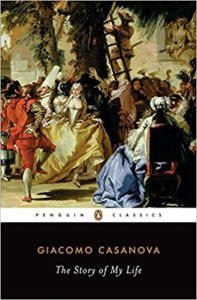Venice has a long and brilliant literary history, from writing like Casanova’s The Story of My Life (hint: he’s not all Lothario) to its veritable ownership of printing in the 15th and 16th centuries. Venice is where the modern page format was conceived, where modern punctuation came to life and where italics started their course into history. On top of that, the city has been the inspiration for everyone from Shakespeare (Othello, The Merchant of Venice) to Anne Rice. Venice has a long ranging impact on our English speaking lives, having given us the words arsenal, lagoon, lido, and regatta. With a history this rich, you can only imagine my excitement to dig into the narrow winding streets to find some treasure. I started at the most famous: Libreria Acqua Alta, literally ‘Bookshop of High Water’. Libreria Acqua Alta has a reputation which precedes it, since it’s featured in every guidebook, website, blog and article about Venice. It’s a higgledy piggledy shop, with books stashed in baths and a giant gondola. Books take up every inch of possible space, from topics across the spectrum. Outside, facing onto the canal, there are a series of steps made from – you guessed it – books. Because it’s cramped and a tourist favourite, I didn’t get much time to browse the actual titles, but I’m not sure that’s why people go in the first place. It’s a great spot to pick up a postcard – and mind the cats, they’re really in charge. Next we came across Mare di Carta, a small shop in Santa Croce which focuses on the maritime. This one is loaded with maps, sailing ephemera, and shelf upon shelf of books about the water – from making sailor’s knots to spotting wildlife and taking care of boats. As a boat lover with my feet off land as often as possible (though alas never often enough), this is a haven of escapism — but for Venice, this is a shop that shows its history as a fishing community and maritime city of renown. We found Charta by accident on an evening walk, but oh what a find. Charta has a large range of English and international books, but its beauty lies in its special collections, which include first editions of famous works as well as artistically bound editions of books from James Bond to Moby Dick and everything in between. The shop also sells a range of truly beautiful canvas and leather bookmarks, as well as literary miniatures — tiny bookcases full of titles intended as ornaments. Everything here is expensive, but window shopping alone is a thing of glory. I set out to find Damocle Edizioni in San Polo, which is not too far from the world famous Rialto bridge. Every time you turn a cover in Venice, there’s a sense of inspiration, and Damocle Edizioni makes full use of that sense of wonder. As well as being a bookshop, Damocle is an independent publisher and often publishes special editions of famous books with cover art by local and regional artists. These ‘artist books’ feature authors ranging from Lawrence Ferlinghetti to H.P. Lovecraft. Sometimes they show up on Etsy, and some of them are a true slice of art for a very small price. The bookshops of Venice are rarely just about the books, and often crossover with art, miniatures and artistic endeavour that far surpasses the mass market publishing industry we recognise as the norm. This is one of the things that makes Venice stand apart, and their commitment to their craft remains steadfast, even as bookbinding and printing die out as specialisms. That’s why I stopped by Pablo Olbi, which has been going since the 1960s and is run by Paolo, a master bookbinder who is determined to keep his art alive. Paolo is incredibly kind and polite, and introduced me to many of his beautiful notebooks as well as showing me pictures of his old (and still used) 1900s typographical press. Much of Paolo’s work is done by hand and though these books are empty of text on purchasing, some of the world’s new masterpieces will doubtless be stored inside them.
